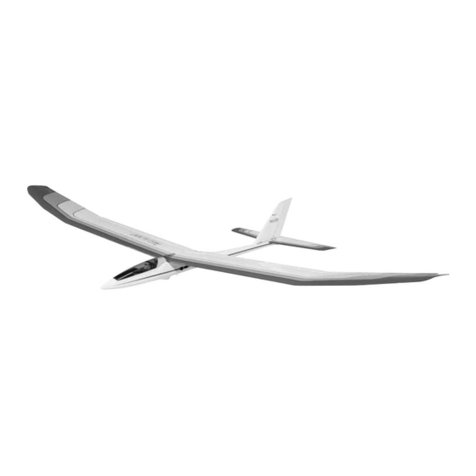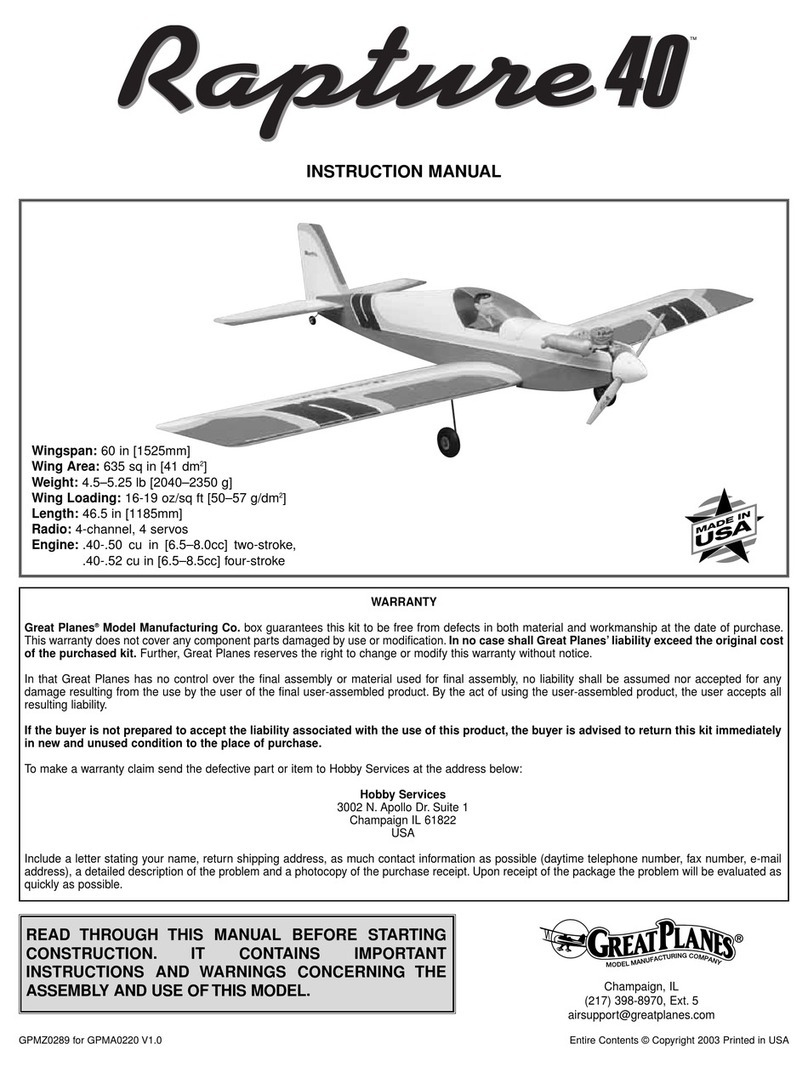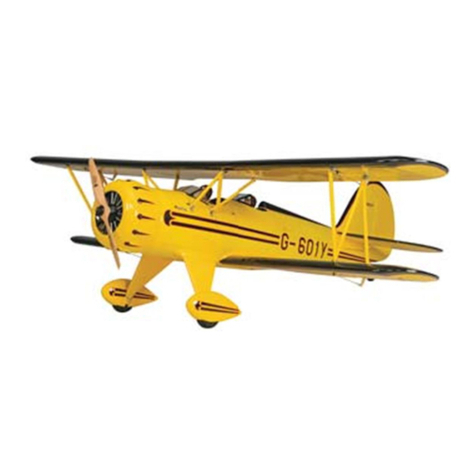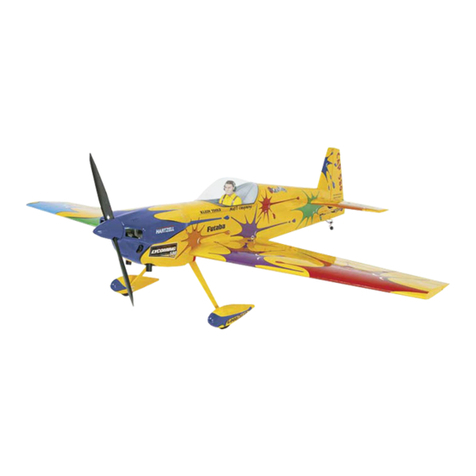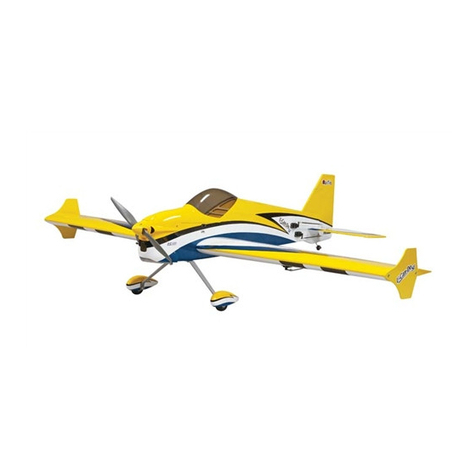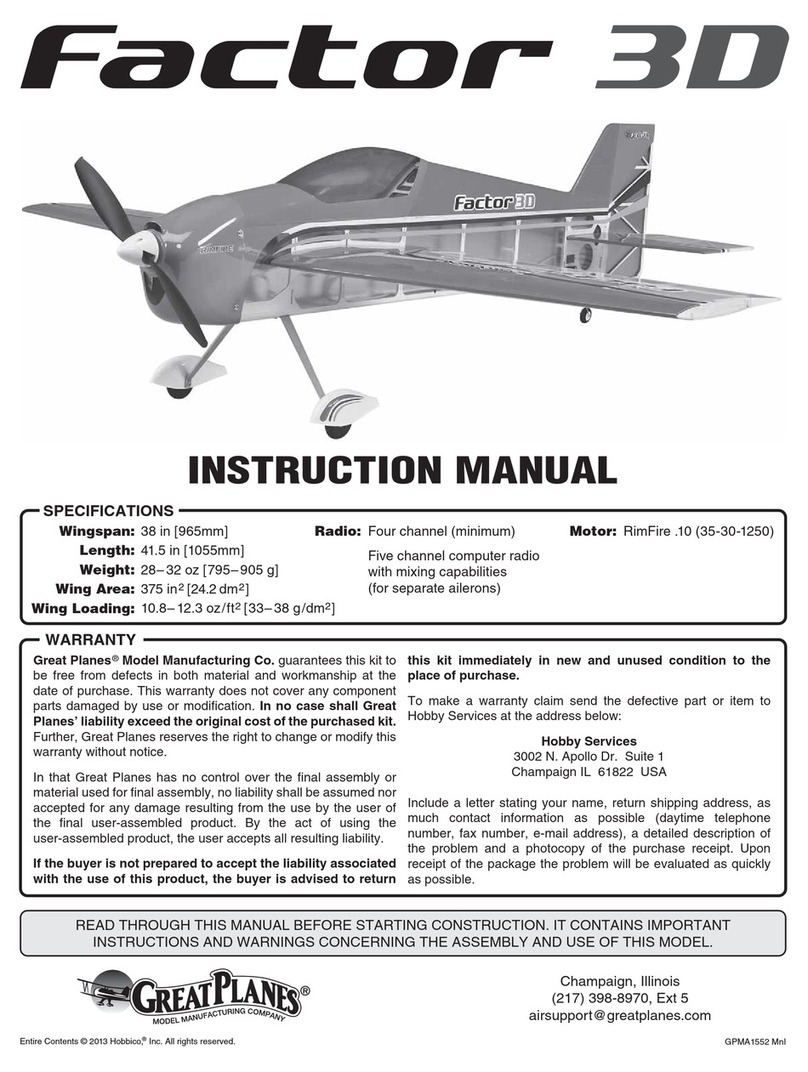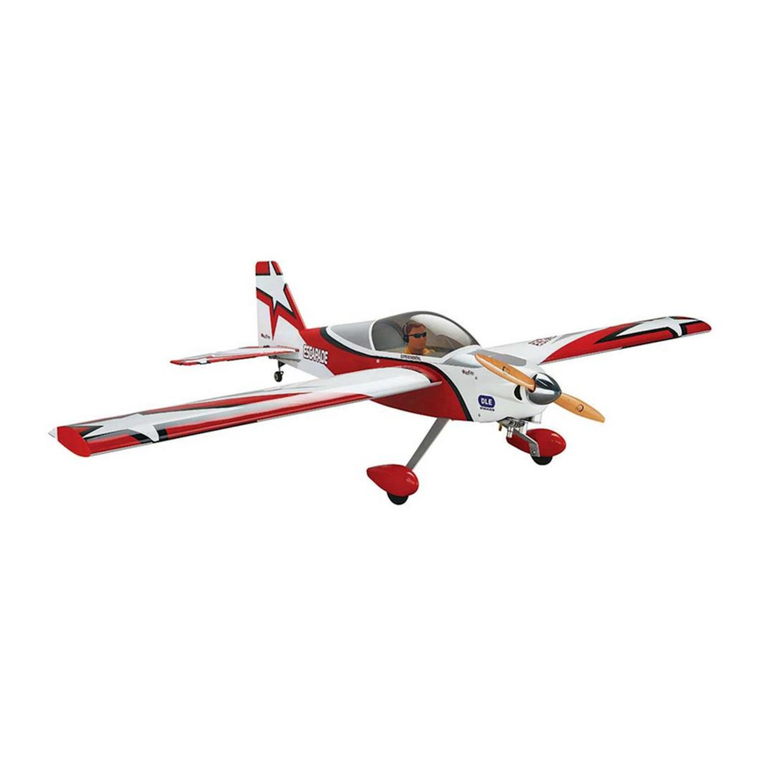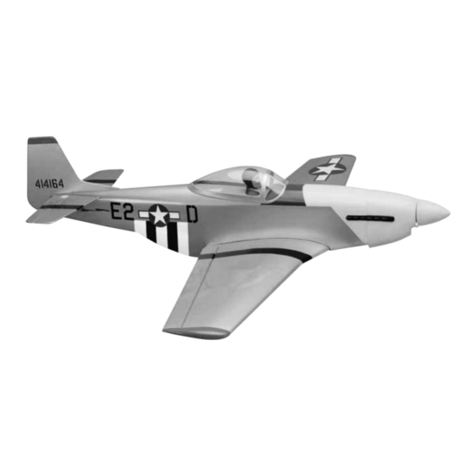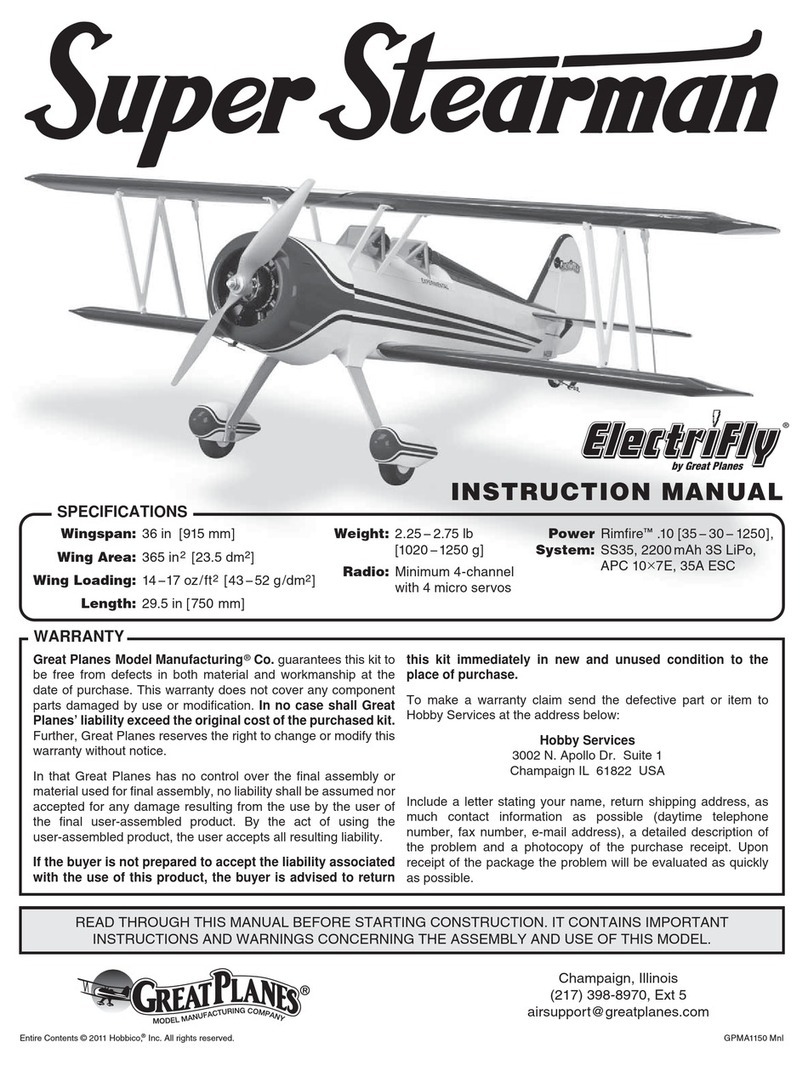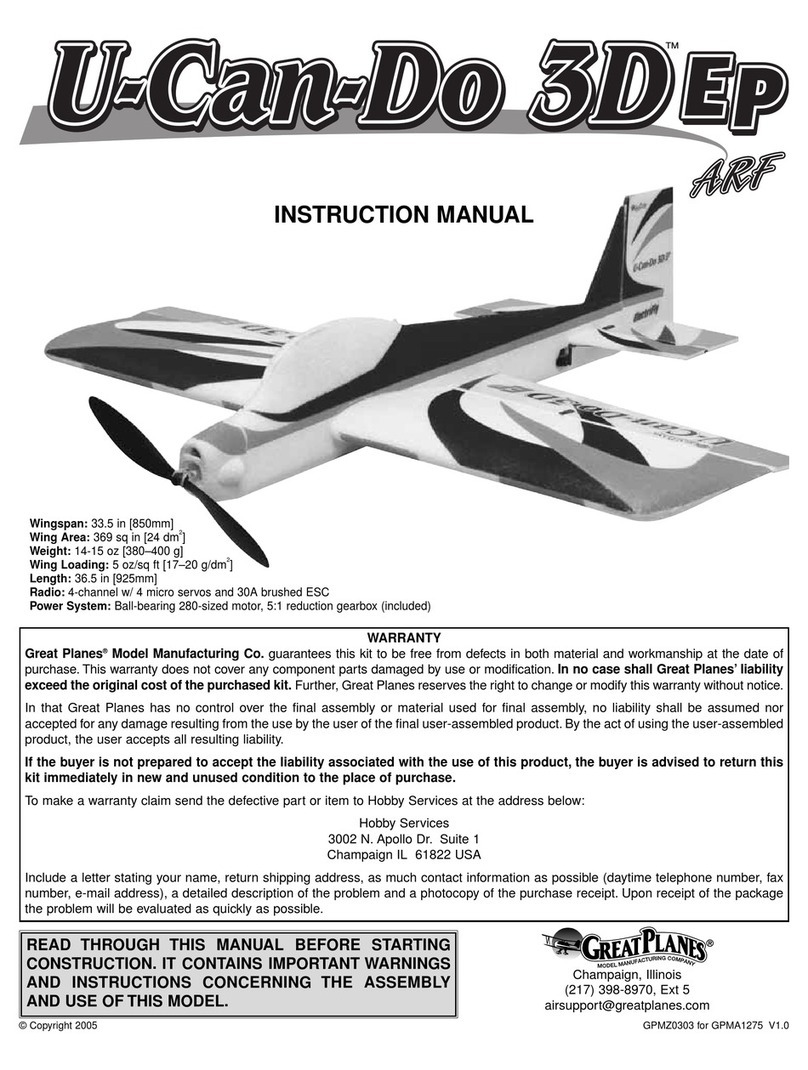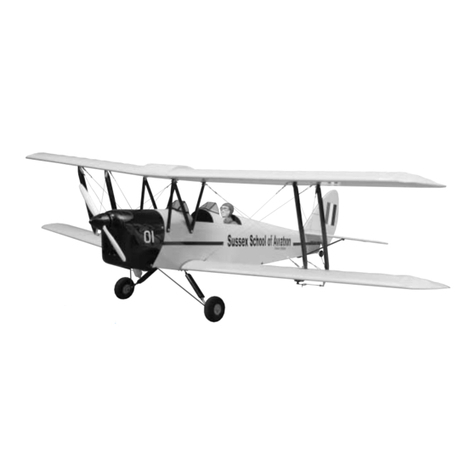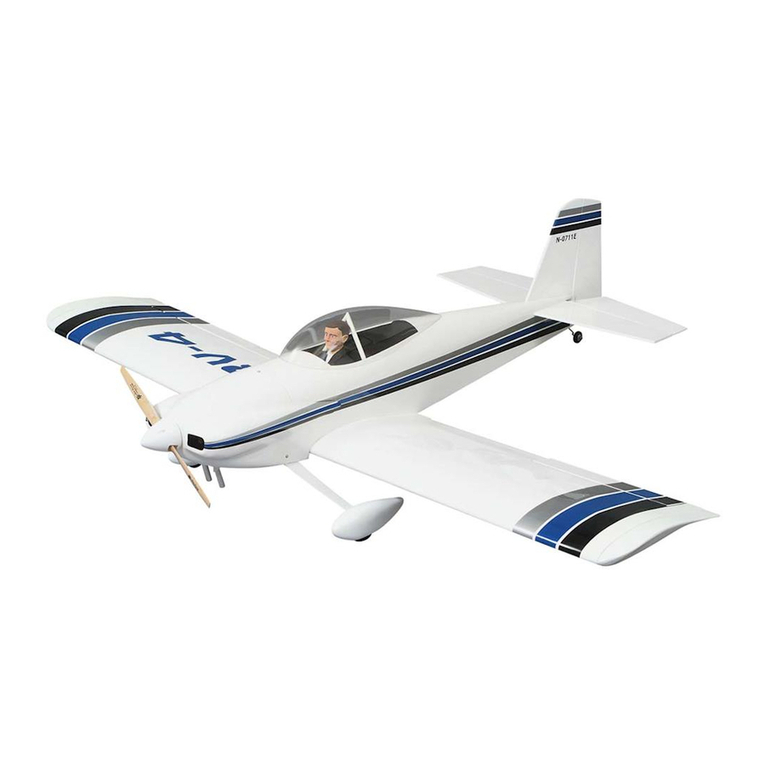
3
PROTECT YOUR MODEL, YOURSELF
& OTHERS...FOLLOW THESE
IMPORTANT SAFETY PRECAUTIONS
1. Your Reactor .60 Bipe should not be considered a toy, but
rather a sophisticated, working model that functions very
much like a full-size airplane. Because of its performance
capabilities, the Reactor, if not assembled and operated
correctly, could possibly cause injury to yourself or spectators
and damage to property.
2. You must assemble the model according to the
instructions. Do not alter or modify the model, as doing so
may result in an unsafe or unflyable model. In a few cases
the instructions may differ slightly from the photos. In those
instances the written instructions should be considered
as correct.
3. You must take time to build straight, true and strong.
4. You must use an R/C radio system that is in good condition,
a correctly sized engine, and other components as specified
in this instruction manual. All components must be correctly
installed so that the model operates correctly on the ground
and in the air.You must check the operation of the model and
all components before every flight.
5. If you are not an experienced pilot or have not flown
this type of model before, we recommend that you get the
assistance of an experienced pilot in your R/C club for
your first flights. If you’re not a member of a club, your local
hobby shop has information about clubs in your area whose
membership includes experienced pilots.
6. While this kit has been flight tested to exceed normal use,
if the plane will be used for extremely high stress flying, such
as racing, or if an engine larger than one in the recommended
range is used, the modeler is responsible for taking steps to
reinforce the high stress points and/or substituting hardware
more suitable for the increased stress.
7. WARNING: The cowl, wheel pants and center wing brace
included in this kit are made of fiberglass, the fibers of which
may cause eye, skin and respiratory tract irritation. Never
blow into a part (wheel pant, cowl) to remove fiberglass dust,
as the dust will blow back into your eyes. Always wear safety
goggles, a particle mask and rubber gloves when grinding,
drilling and sanding fiberglass parts. Vacuum the parts and
the work area thoroughly after working with fiberglass parts.
We, as the kit manufacturer, provide you with a top quality,
thoroughly tested kit and instructions, but ultimately the
quality and flyability of your finished model depends
on how you build it; therefore, we cannot in any way
guarantee the performance of your completed model,
and no representations are expressed or implied as to
the performance or safety of your completed model.
Remember:Take your time and follow the instructions to
end up with a well-built model that is straight and true.
DECISIONS YOU MUST MAKE
Engine Recommendations
The recommended engine sizes for the Reactor .60 biplane
are specified on the cover of this instruction manual. If you
haven’t yet decided whether to go 2-stroke or 4-stroke, one
big advantage of most 4-strokes (such as the O.S. Max .91
illustrated in this manual) is that the muffler can be positioned
to aim messy exhaust out the bottom of the fuselage keeping
most of the plane pretty clean. If mounting a 2-stroke inverted
(positioning the muffler on the side of the fuselage), much of
the exhaust tends to get deposited on the side of the fuselage
unless preventative measures are taken.
If using the O.S. Max .91 and you wish to configure the muffler
as shown in the manual (see page 20), an O.S. “Exhaust
Header Pipe (IN)” will also be required (OSMG2624).
3’ [900mm] standard silicone fuel tubing (GPMQ4131) will
also be required for glow engine installation.
A #29 (.135" [3.4mm]) drill and an 8/32 tap will be required
for drilling and tapping holes in the motor mount. A Great
Planes 8-32 tap & drill set (GPMR8103) or a Great Planes
10 piece tap & drill set (GPMR8108) are suitable.
Motor/Battery/ESC Recommendations
If electric power is your preference, rest assured that an
extensive part of testing and development of the Reactor .60
biplane was done with electric power. With the recommended
power plant, the Reactor was a thrill to fly and able to perform
all the same “3D” maneuvers it did when powered with glow.
If not certain whether to go glow or electric, consider some
of the advantages of electric, which are: absence of oily
exhaust residue and the constant cleaning that goes with it;
“instant on” from never having to start the engine; and most
important to some people, silence. Of course, there are
other variables that may offset some of these advantages
such as the expense of LiPo batteries and all the charging
paraphernalia, charging time, and shorter flight times. (Using
the batteries and motor recommended, average flight times
for the Reactor were approximately 8 minutes.)


